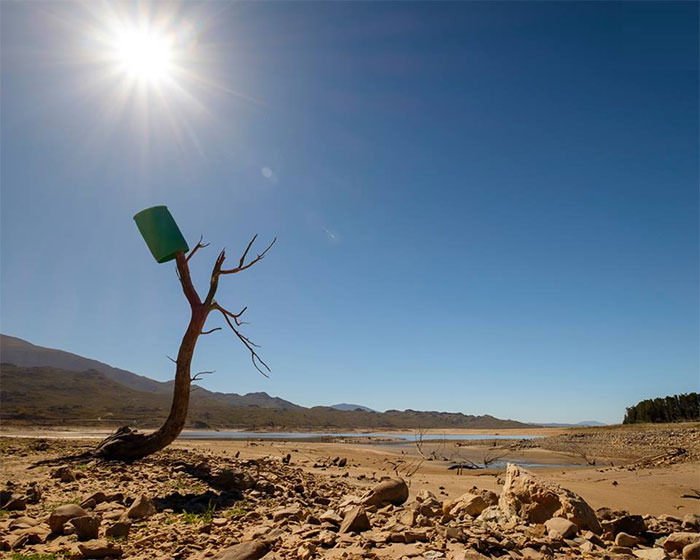What are the salient features of the African climate?
Let's learn about the Highlights of Africa's climate to have a better overview of the climate here.
General overview of the geography of Africa
Africa is a large continent with an important geographical position. It is bordered to the north by the Mediterranean Sea, to the north by Asia, to the southeast by the Indian Ocean, and to the southwest by the Atlantic Ocean. However, this continent has the equator passing through, causing intense heat, which is a great limitation in the climate, as well as the economic development conditions of the region.

Most of Africa lies between Tropic of Cancer and Tropic of Cancer, so Africa is hot all year round.
Africa is the third largest continent in the world, after Asia and the Americas. With an area of over 30 million square kilometers, most of Africa lies between the Tropic of Cancer and the Tropic of Cancer. So Africa has a hot climate all year round.
Surrounding Africa are vast oceans and vast coastlines: the Atlantic Ocean, the Indian Ocean, the Mediterranean Sea, the Red Sea. To the northeast, Africa borders Asia and is connected to Asia through the Isthmus of Suez. The Suez Canal passed through this isthmus, through the Mediterranean to the Red Sea.
Africa's coastline is less fragmented, with very few bays, islands and large islands; in which, the largest island to mention here is the island of Madagascar and the peninsula of Somalit.
Climate characteristics of Africa
Africa is a continent with relatively high topography. The entire continent is considered as a giant plateau, on which there are large basins.
Because it is located in the tropical belt, with a large area, and no sea inland, so it has the hottest and driest climate in the world.
Africa has a hot climate, the average annual temperature is over 20 degrees Celsius, the weather is stable. Rainfall in this area is relatively small and can gradually decrease towards the two tropics, thereby forming large deserts, spreading to the sea.
In North Africa, there are many deserts, notably the largest Sahara desert in the world, everywhere only see dry rocks and vast sand seas. In this place, daytime temperatures can reach 50 degrees Celsius, conversely, the afternoon can drop to 0 degrees Celsius. Because of the drought, rivers and lakes here are rare and have very little water.
In Africa, about a third of the area has a climate divided into two distinct seasons: the rainy season and the dry season. The place where there is a lot of buying will be enough conditions for the tropical jungle to grow. Where there is enough moisture, there are sparse forests. In contrast, with places with little rain, there will appear many tall grasslands and shrubs called savanna. On that vast grassland will occasionally appear a few acacia or cornstarch. The bag of corn is a large tree and it can live up to thousands of years. In addition, at the savanna, there will be many herbivores such as zebras, giraffes, elephants and some carnivores such as leopards, lions, hyenas, etc.

In places where there is little rain, there will be many tall grasslands and shrubs called savannas.
Why is Africa the hottest dry continent in the world?
It can be said that Africa is the driest and hottest continent in the world for the following reasons:
Right from the geographical position of Africa is an area that no other continent has. The Tropic of Cancer runs across the North and South parts of the continent, so Africa is considered to be sandwiched between the two Tropics. On the other hand, most of Africa is located in the hot zone, so it will be strongly influenced by the block when the tropical continent is dry and hot.
In the north, Africa borders a large Eurasian continent. At a certain time, the northeast monsoon in the Eurasian continent spills over to the northern part of Africa, making the climate very dry and difficult to cause rain.
Africa is a large, flat territory, with elevations above 2000 meters, the coast of Africa is not much dissected. With the topography of a large blocky continent, the influence of the sea cannot travel inland, making Africa's climate very dry.
In addition, Africa is also strongly influenced by the flax sea currents, along with the mountain ranges that go deep into the sea, which is also the reason to prevent the influence of the sea from reaching the mainland.
It is these reasons that have caused severe dry heat in Africa, rare rainfall, harsh and dry climate. Therefore, Africa is the driest and hottest continent in the world.
- African agriculture is at risk of wiping out
- African wild dogs face extinction because of heat
- Death god stalks African elephants
- 11 interesting features on laptops you may not know yet
- WMO enhances climate services in Africa
- Mysterious civilization in Central America
- Not only rhinos and tigers, African lions will soon disappear
- African elephants have the first-class sensitive aces
- Genetic conservation of South African penguins
- African elephants will decline by a fifth in the next 10 years
- African elephants lose their ivory genes to avoid extinction
- 'Makeup' for Firefox
 Is the magnetic North Pole shift dangerous to humanity?
Is the magnetic North Pole shift dangerous to humanity? Washington legalizes the recycling of human bodies into fertilizer
Washington legalizes the recycling of human bodies into fertilizer Lightning stone - the mysterious guest
Lightning stone - the mysterious guest Stunned by the mysterious sunset, strange appearance
Stunned by the mysterious sunset, strange appearance